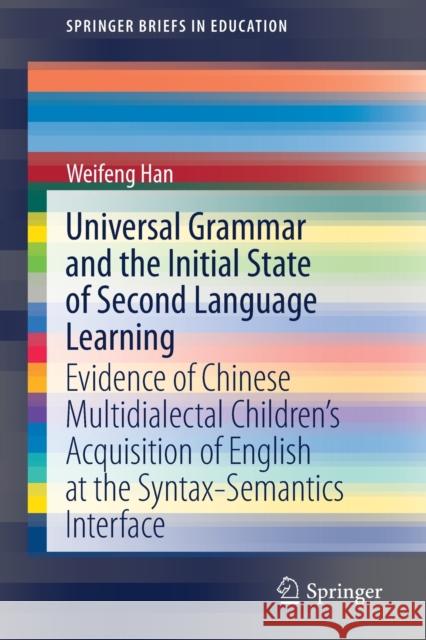Universal Grammar and the Initial State of Second Language Learning: Evidence of Chinese Multidialectal Children's Acquisition of English at the Synta » książka
topmenu
Universal Grammar and the Initial State of Second Language Learning: Evidence of Chinese Multidialectal Children's Acquisition of English at the Synta
ISBN-13: 9789811524516 / Angielski / Miękka / 2020 / 76 str.
Universal Grammar and the Initial State of Second Language Learning: Evidence of Chinese Multidialectal Children's Acquisition of English at the Synta
ISBN-13: 9789811524516 / Angielski / Miękka / 2020 / 76 str.
cena 195,42 zł
(netto: 186,11 VAT: 5%)
Najniższa cena z 30 dni: 192,74 zł
(netto: 186,11 VAT: 5%)
Najniższa cena z 30 dni: 192,74 zł
Termin realizacji zamówienia:
ok. 20 dni roboczych.
ok. 20 dni roboczych.
Darmowa dostawa!
Kategorie:
Kategorie BISAC:
Wydawca:
Springer
Seria wydawnicza:
Język:
Angielski
ISBN-13:
9789811524516
Rok wydania:
2020
Dostępne języki:
Numer serii:
000418478
Ilość stron:
76
Waga:
0.14 kg
Wymiary:
23.39 x 15.6 x 0.48
Oprawa:
Miękka
Dodatkowe informacje:
Wydanie ilustrowane











